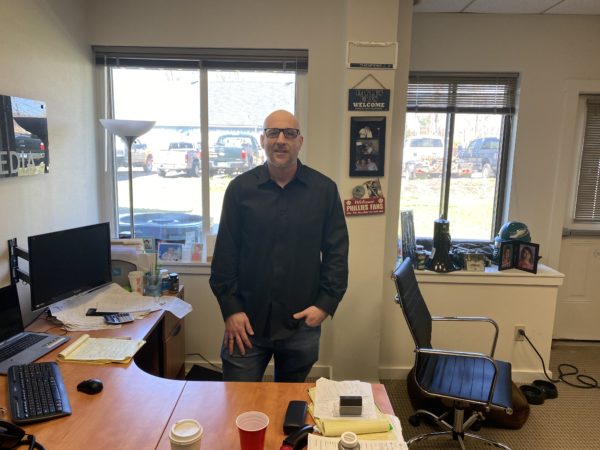Nonfungible tokens (NFTs) have become more ubiquitous in recent months, with some people praising them as the next step in transactions and consumption while others dismiss them as a passing fad.

Scott Johnson, president of Mack Media Group, a digital marketing agency in Brookfield, has invested in some NFTs and believes the billion-dollar NFT business is at the forefront of a new way of how people think about the digital age.
“The pandemic accelerated that and I”™m not 100% sure why,” Johnson speculated. “People just had more time, I think, to kind of look into things.”
Though NFTs seem to have become popular overnight, Johnson contended that the shift was inevitable.
“With the money that people have been making off of crypto, those people are going to obviously take their earnings from crypto and try to get in early for NFTs,” he continued. “I just think that where we”™re at in society, I think that we”™re ready to make this jump into the digital world.”
An item that is fungible is considered to lack unique aspects, being completely interchangeable with the same sort of item ”” for example, one $10 bill is considered equal to another $10 bill. A nonfungible item is one that is considered unique, one of a kind and not interchangeable for another ”” the item can be replicated, such as a print of a painting, but the original remains.
Nonfungible tokens are digital tokens that are unique and cannot be replicated. These tokens are recorded on the Ethereum blockchain, which acts as a form of proof of ownership ”” not unlike a contract or a deed to a house. For the most part, these unique tokens are used to represent digital items such as pictures, though physical items like cars may also be represented. These newly minted NFTs can then be sold and bought on various platforms like OpenSea, SuperRare and Rarible.
The logic on display in the NFT realm ”” of owning a digital item that is supposedly one of a kind ”” is seemingly at odds with common wisdom that a digital item is indistinguishable from its copy. But Johnson believed this perception of digital ownership will become more common as time passes and the public”™s understanding of NFTs and blockchain technology increases.
“People are making a ton of money off of NFTs,” Johnson said, “and it”™s getting intertwined within the business. But when is it going to trickle down to the masses?”
Johnson opined that the appeal and knowledge of NFTs by common people is sure to happen in the near future as the nascent market continues to gain momentum in the public consciousness.
“More and more people are learning about it on a daily basis,” Johnson said. “Eventually, at some point, it”™s going to cross over into one”™s industry at some point.”
As such, Johnson suggested business professionals acquaint themselves with NFTs and related concepts and technologies like blockchains and cryptocurrency (which is often used for purchasing NFTs), with the goal of determining if there are potential NFT applications worth pursuing.
“This is the time where you need to adapt your business and understand what”™s coming,” Johnson said, noting that those who do not adopt tools like NFTs risk falling behind those that invest in this fast-growing sector.
However, the technology is not without its drawbacks. The methods used to add to a blockchain like Ethereum and authenticate a transaction requires energy-intensive computation, which leads to a large carbon footprint. According to Johnson, the industry is currently working on greener solutions, and countered that its environmental impact is overstated.
“I think of all the things that we”™re worried about, hurting the environment has got to be at the bottom,” he said. “I have a much bigger problem with a cruise ship.”
Because the NFT market is still evolving, there is concern from some observers of the existence of an NFT bubble, similar to the dot-com bubble. Though enthusiastic for the mainstream adoption of NFTs, Johnson acknowledged the market may currently be in a bubble in part because of questionable investments.
“Most of them, a very large percentage, are going to be projects that don”™t work. And that is something that happens in every industry that”™s taking off,” Johnson said. “There has to be a bubble because of the fact that that”™s what it takes in order for an industry to really grow. As to where the NFT bubble bursts, I think it”™s going to be the higher, more valued ones ”” you”™re still going to be able to make money and flip the ones that are on the lower levels.”



















